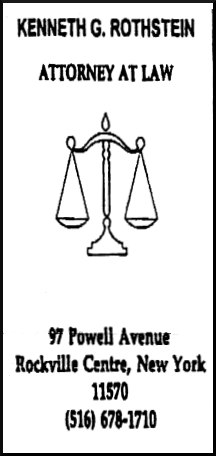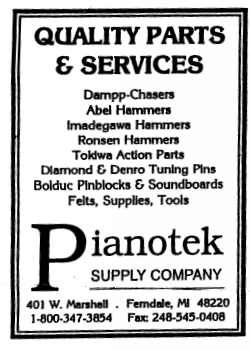|
Tech Tip by Michael Slavin RPT
There are many causes for "sticky," or non-repeating keys. One is specific to older Acrosonics due to their unique action design. Sometimes the projecting arm of a lifter-finger does not sit squarely over the key-tail and capstan, and on a firm blow the capstan will slide out from under its lifter-finger and wedge between the two adjacent abstracts. Although the lifter-finger may appear to be twisted or warped, exchanging it with another, even one that "twists" in the opposite direction, will only yield the same position over the key-tail. In actuality, the hole for the wippen flange center and/or the open bird's eye at the front of the wippen (for the lifter center) have not been drilled straight, and the lifter-finger will always be off-center. The only way to truly correct the problem is to replace the wippen, or to plug the key-tail and re-drill the capstan for better positioning. Neither of these options are quick or particularly applicable during a time-pressured appointment in the field. Here is a fast solution which overcomes this particular problem on the spot. Firstly, check for correct lost motion and adjust the capstan if necessary. Drill a 1/16" pilot hole (only about 1/4" deep) in the key-tail next to the capstan, opposite the side which slides out from under the lifter-finger. Insert a small oval-head brass screw (#4x3/4 is perfect-the size usually used to mount the long hinge on a grand lid) into the pilot hole to the same height as the capstan. The brass screw effectively extends the contact area of the capstan and becomes a "surrogate " capstan, which will remain centered and secure under the lifter-finger. And speaking of "sticky keys", I recently received a call from a customer whose son had told him the piano had a sticky key. Upon examination of the offending note I found that the budding musician had candy residue on his fingers and the key-top was covered with "goo" - literally a "sticky key!" |


|